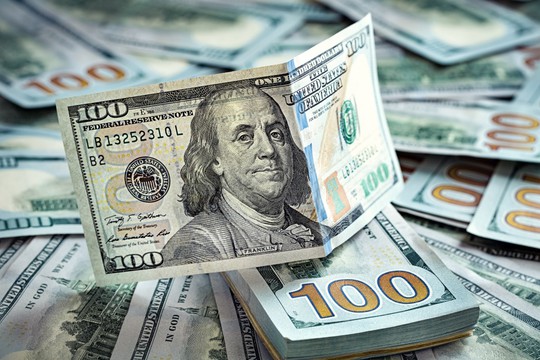While a chorus of experts still insists that there’s no alternative to the dollar, this is untrue. The dollar will dominate as long as it serves the interest of those who use it. Once the dollar begins placing assets at risk, alternative tools of commerce are certain to emerge. And they already are, ‘New York Post’ writes with surprise and anxiety.
Make no mistake: a shift away from the dollar would be a huge blow to America’s international standing. The days of being able to print limitless amounts of currency could end, along with our ability to buy foreign goods cheaply.
Stark proof that a new game is afoot filtered out of Davos last month. Saudi Arabia’s Finance Minister, Mohammed Al-Jadaan, made the stunning announcement that—for the first time in 48 years — the world’s biggest oil producer was open to trading in currencies other than the US dollar.
That’s a far cry from the deal Richard Nixon cut with King Faisal decades ago to solely accept dollars as payment for oil. (In exchange, Nixon agreed to protect the Kingdom from Soviet, Iranian and Iraqi aggression.) That pact laid the groundwork for a strong dollar as oil money began to flow through the Federal Reserve.
Today, China imports 1.4 million barrels of oil a day from Saudi Arabia (up 39% over the past year), making it the Kingdom’s largest customer. Which is why both sides are seeking cheaper alternatives to using dollars for every transaction. With Aramco investing in a massive new refinery in China, the relationship will only deepen.
The Saudi shift is only the latest data point. At the 2022 BRICS summit in Beijing, Vladimir Putin announced plans to expand the Shanghai Cooperation Organization (SCO) and develop an alternative for international payments using a currency basket of Chinese RMB yuan, Russian rubles, Indian rupees, Brazilian reals, and South African rand. For reference, the SCO is the world’s largest regional organization, representing 40% of the world’s population and 30% of global GDP.
A new currency is only part of the picture. China is pioneering new exchanges to shift commodity trading from Western institutions like the troubled London Metal Exchange and the New York Mercantile Exchange.
Even the Europeans have gotten into the act, by creating a special-purpose vehicle — INSTEX — to facilitate non-dollar, non-SWIFT humanitarian transactions with Iran to sidestep U.S. sanctions. Russia, predictably, expressed interest in participating and the first transaction was completed in March 2020 to facilitate a medical equipment sale to Iran to combat COVID.
Russia and Iran are also developing a gold-backed stablecoin, oil traders are already using the UAE’s dirham to settle oil trades and the Indian rupee is finally being positioned as an international currency.
The beat goes on: China’s Cross-Border Interbank Payment System (CIPS) processes only 15,000 transactions a day — Western-favored CHIPS moves 250,000 daily — but it’s growing. Russia offers its own System for Transfer of Financial Messages to allow users to bypass SWIFT.
Even the Swiss-based Bank for International Settlements is getting into the act, creating a renminbi liquidity line to support contributing central banks in times of crisis. So far, the central banks of Chile, Hong Kong, Indonesia, Malaysia, and Singapore have subscribed.
In the 21st century, a currency’s value — including the dollar — will become increasingly competitive. If there is less demand for dollars, the value of the dollar will decline. Everything will become more expensive. Not all at once, but over time — making deficit spending more costly or, unthinkably, impossible.
It’s not farfetched to imagine the US experiencing a debt crisis because no one shows up to buy its bonds. The US dollar will become just one more currency, among many. And ultimately, if the dollar loses it shine, so will the ability of the US to project power, writes NYP.
read more in our Telegram-channel https://t.me/The_International_Affairs

 10:30 17.03.2023 •
10:30 17.03.2023 •























